
ILM Bluetooth Modular Helmet 953 + A Better Option
left for contents
ILM makes waves for making the highest selling motorcycle helmets on Amazon.
Does that mean you should buy one?
No – and let me explain why in this article.
And I won’t leave you empty-handed. I’ll give you my recommendation for the best smart modular helmets this year.
ILM is not new to the industry – producing helmets, gloves and boots since 2013 as a fully-online brand – but they are not known for quality. They aim to make cheap gear like the ILM 953 modular Bluetooth helmet. for budget-conscious riders.
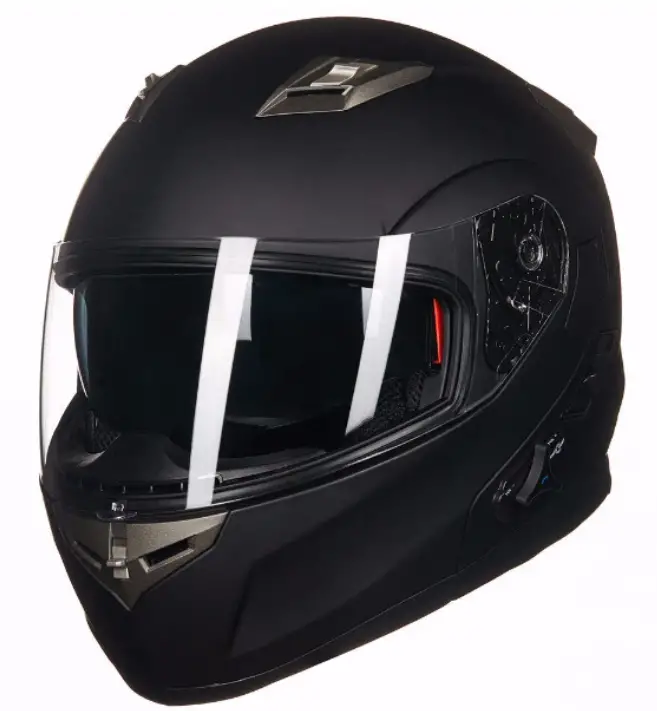
However, if you really care about your budget and your life, you won’t fall for ILM’s tasty price point. You’ll hold out for something better – coming at the end of this article.
So why don’t I recommend the ILM 953?
Let’s get into it.
The ILM 953 Bluetooth Modular Helmet
Modular helmets are all the rage these days. Lift up the chin bar for a breath of fresh air or a drink, and lock it back down for full face protection.
However, that chin bar presents safety issues.
Safe modular lids have strong metal hooks and posts that lock the chin bar down in place while you ride. How about the ILM 953?
Take a look for yourself.
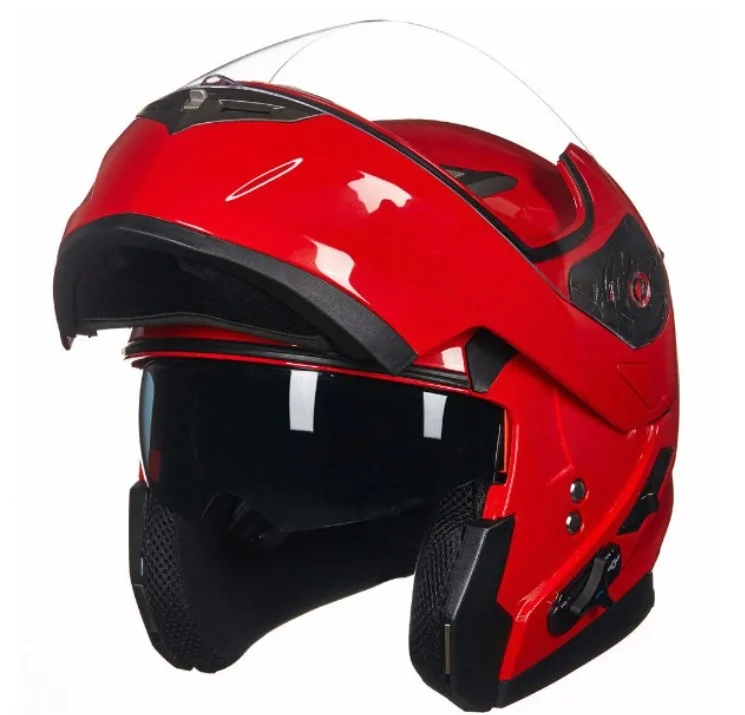
Nothing there. Contrast that to Shoei’s NEOTEC, with strong posts right at the jaw line to lock the chinbar down.

This lid also weights 5.5 lbs, which is almost TWICE as much as many modulars and full face helmets. That’s going to hang on your head like a bowling ball, making you tired and distracted.
Looking at safety certifications, something needs to be clarified.
There’s some confusion about whether the ILM 953 is ECE-certified. The company claims that the helmet “Meets or Exceeds both ECE and DOT Safety Standards” (2), but doesn’t clearly state the helmet is ECE certified. Customers have confirmed there is no ECE certification on this helmet when it arrives.
That little bit of sly dishonesty pushes my buttons, and it should push yours too.
This helmet is only DOT-approved. However, DOT approval is self-certified, so it doesn’t say much if the company is already prone to dishonesty. Plus, DOT only tests top-down impacts, which are rare in motorcycle crashes. DOT certification doesn’t say ANYTHING about the chin bar, sides, or rear of the helmet.
Let me break down each part of this helmet for you.
The ILM Helmet – Shell
The ILM 953 has a shell made from ABS, or acrylonitrile butadiene styrene – plastic. This is one of the cheapest materials you can make a motorcycle helmet from. It’s reasonably strong, but it’s the worst material you can make a helmet from.
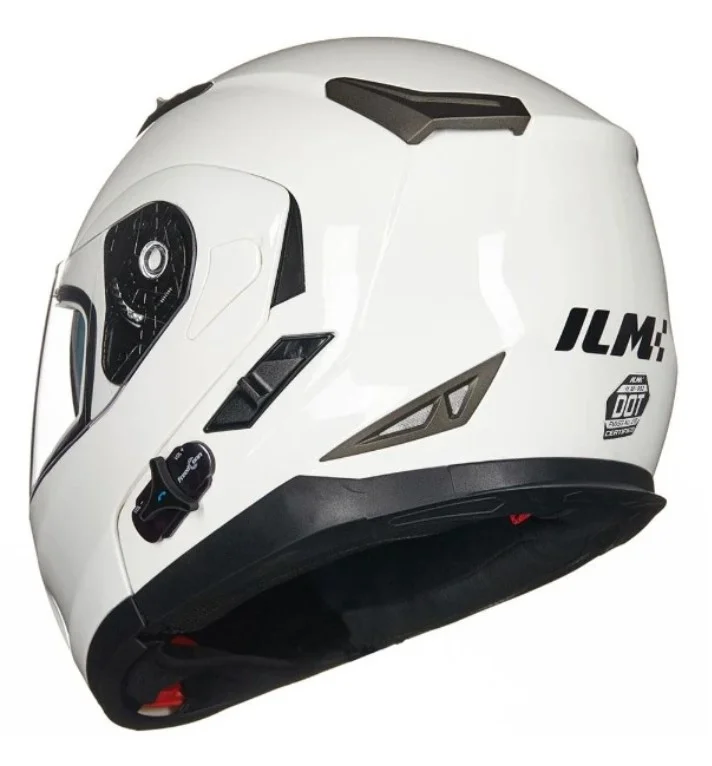
In terms of ventilation, you get a chin vent, some forehead vents, and a rear exhaust. The vents at the front of the ILM helmet can be opened and closed easily, even when you’ve got your gloves on. Nothing terrible there.
The ILM Bluetooth Modular Helmet Interior
So what about the interior? What is ILM doing to protect your head and make you comfortable on your rides?
Under the shell, you get EPS foam. ILM doesn’t mention anything about dual or multi-density foam, which is better for absorbing more types of impacts.
So we have to assume it’s single density. The most basic of the bunch, and the least safe.
For the lining, you can fully remove it to keep it clean, which is helpful. It’s possible to buy a new lining from the company, but there isn’t a price quoted on the website (3).

More than a few people have found the lining low quality, however. You’ll find comments everywhere about the lining quality, saying the foam is “stiff and hard” and that the padding at the top is “very thin” (4).
The ratchet strap for a chin strap isn’t uncommon, but it’s not as safe or strong as a double D-Ring.
You also get an internal sun visor included that you can drop with a switch on the left side.
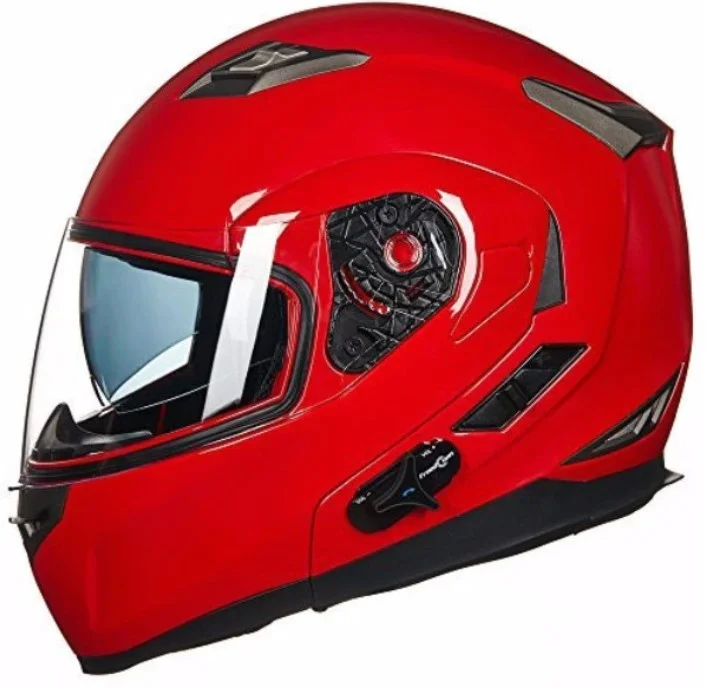
Those are neat, but everyone and their mother makes a helmet with a drop down sun visor nowadays. On to the ‘smart’ components of the ILM 953: the Bluetooth tech.
ILM’s Outdated Bluetooth Tech
When you’re buying a smart helmet, you want to make sure the integrated technology will be current enough for your needs to last the life of the helmets (five years).
That’s why I like the Sena Stryker and Impulse. They carry a hefty pricetag, but the electronics inside will be current for years to come.
ILM’s system on the other hand? You might as well be on dial-up.

The Bluetooth 3.0 unit in this lid can only communicate with other riders up to 0.2 miles away. Modern systems can reach riders 1 mile away.
Only talking to your passenger or a rider you never stray far from? The mic and speakers in this lid also went the same way as the rest of the components: cheap.
On the ILM website, we’re told you get “DSP Echo Cancellation and Noise Suppression Technology” which “offers high-quality voice [at] high speed.” But in reality, riders note they “can barely hear the intercom feature over all the wind noise.”
Want to listen to music? I hope you don’t care for those bass notes, because you won’t get them through these speakers. What you will get is some tinny screeching.
Build quality is lacking too. One reviewer says “one of the bluetooth modules randomly turns on and off” after riding in the rain (4).
At least battery life is decent at 8 to 11 hours of usage.

That is, if you get a battery. There are several reviews mentioning the helmet was missing the battery, the charger and even the manual. Customer service never seems to respond. So you might end up with a cheap helmet instead of a cheap helmet with Bluetooth.
But I haven’t even told you the worst part about the ILM 953 Bluetooth system.
It can only pair with other ILM or Freedconn Bluetooth systems. So not only will you be wearing a crap helmet, you’ll need to convince all your riding buddies to also wear crap helmets in order to use the intercom.
No thanks, I’ll pass.
But what should you buy instead?
Alternatives to the ILM Bluetooth Helmet
Thankfully, there is another modular smart helmet at almost exactly the same price as the ILM 953, but way better.
It’ll let you connect to any other Bluetooth system for intercom.
It uses Bluetooth 5.0, so you can chat across a distance of half a mile with three other riders. The battery will keep going for 12 hours, which is enough for a week of commuting.
And it’s from one of the best brands in the powersports communication world: Sena.
This is the Sena Outrush R.
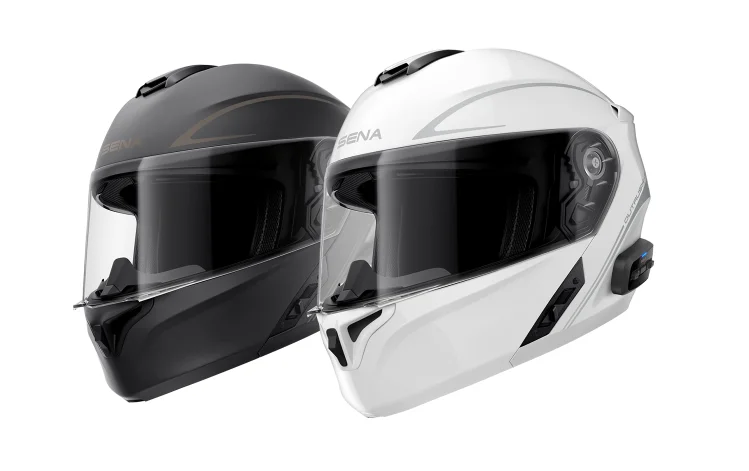
You can pick up the Outrush R at Revzilla or Amazon at the links below
But what if you could get a smart modular with Harman Kardon sound, a pre-integrated Bluetooth system capable of unlimited rider communication over 1.6 miles via Mesh networking, and a TAIL LIGHT?
Check this one out:

That’s the Sena Impulse. You get what you pay for – an absolutely premium modular motorcycle helmet. Get it below on Amazon or Revzilla.
FAQs About the ILM Bluetooth Helmet
Are all bluetooth helmets compatible?
Not all Bluetooth helmets are compatible; it depends on the brand of Bluetooth helmet you buy. ILM Bluetooth helmets will only work with other helmets from the same company, or other FreedConn headsets.
Is ILM a good helmet?
ILM is a reasonable helmet sold at a low price point. There are other helmets that we’d choose before one from ILM that are not much more expensive, like the BILT Techno 3.0 or Sena Impulse.
Where are ILM helmets manufactured?
It’s not easy to track down the origins of ILM helmets. The user guide that comes in the box is for a model BM2-S, which leads back to a company called FreedConn – known as a mid-tier bluetooth headset maker based in Shenzhen, China.
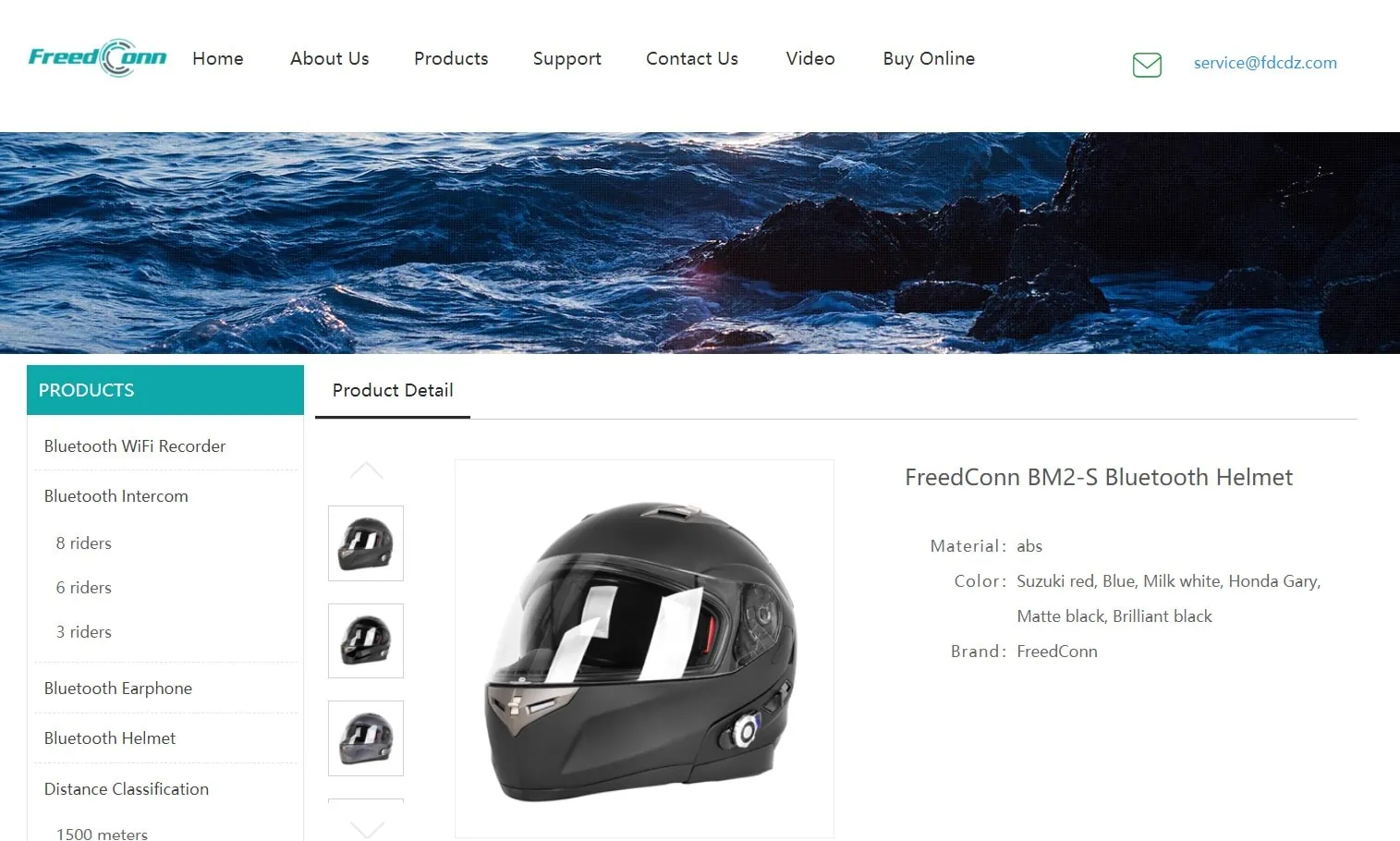
Are ILM helmets safe?
ILM helmets meet the DOT safety standards required in the USA, but that is not a very high bar. None of the company’s helmets are ECE-certified. The materials used are on the cheaper side – ABS is a low-quality shell material and as far as we can tell the EPS foam isn’t dual- or multi-density. While ILM touts their in-house safety testing setup, we wouldn’t trust this helmet considering the other options on the market.
Related

Carbon Fiber Modular Helmets: Ultimate Flip-Up Lids
Discover carbon fiber modular helmets that deliver flip-up convenience, lightweight strength, and serious protection for every ride.


